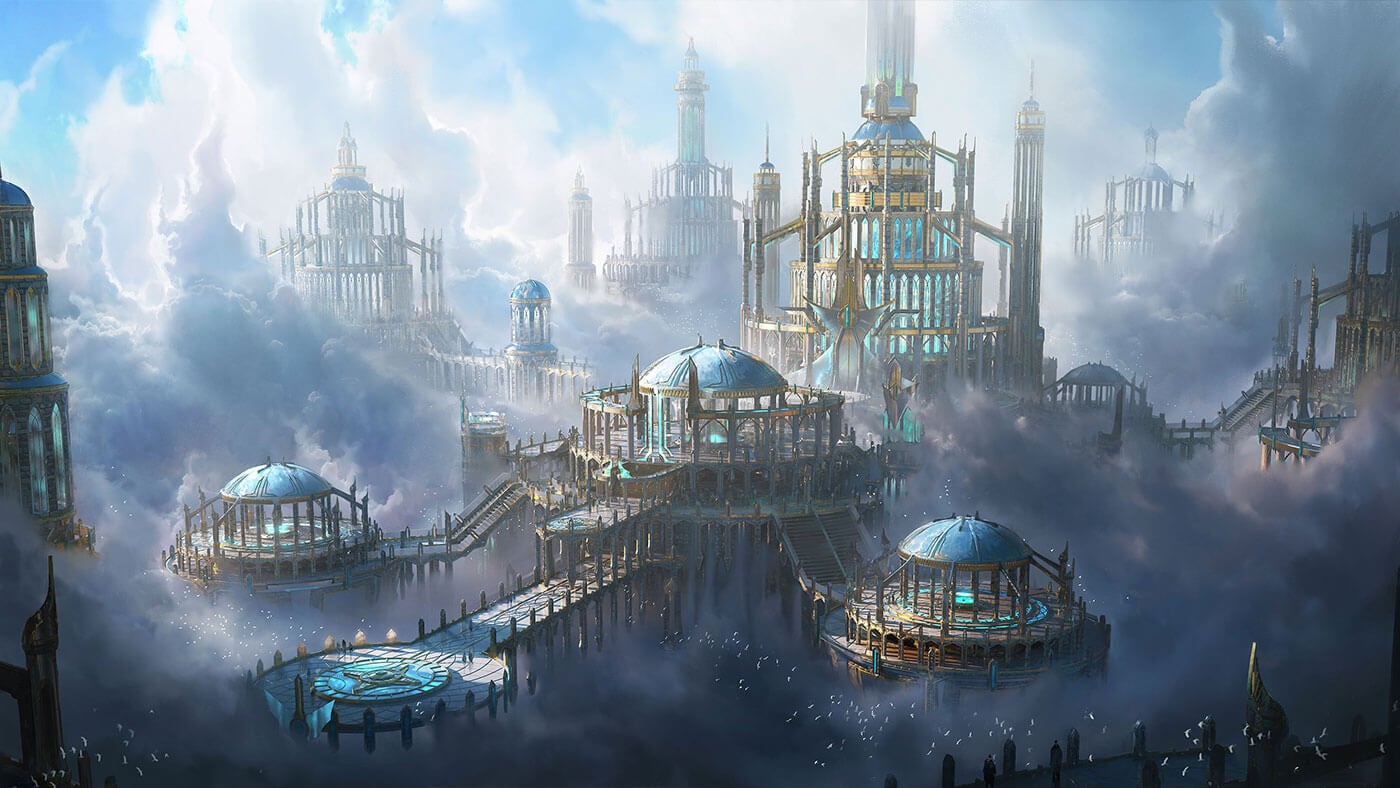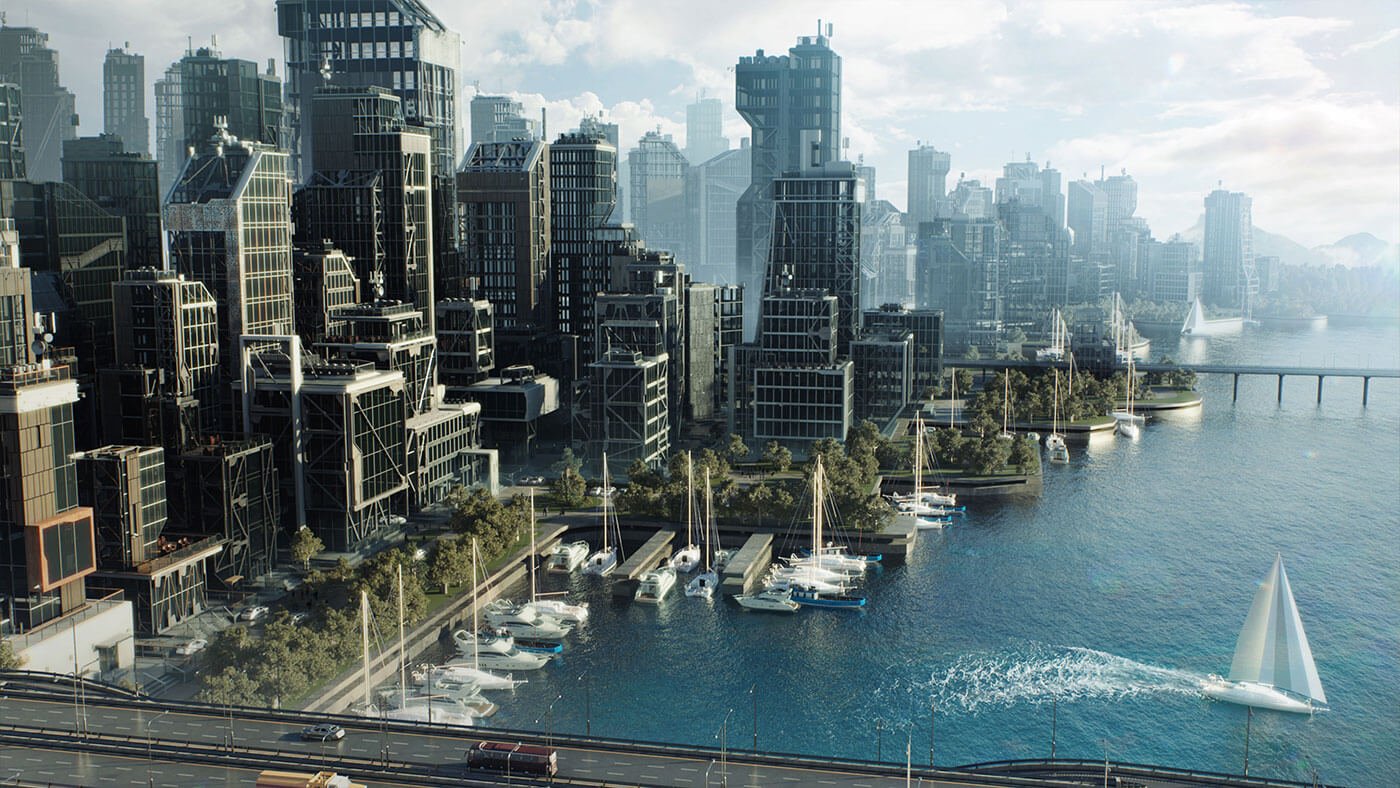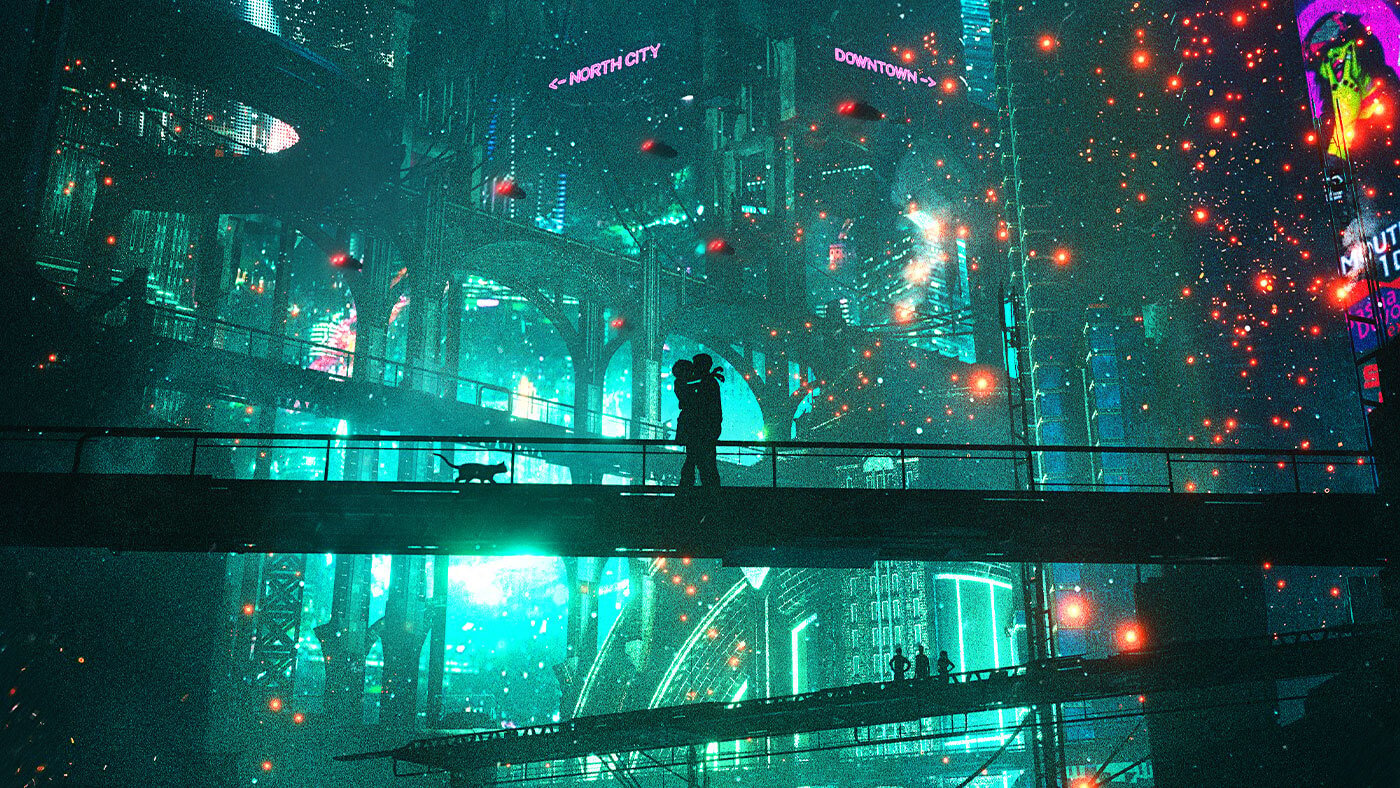Elysium: Behind the Render
Our latest 3D asset kit ‘Elysium’ comes with beautiful ornate patterns, angelic sculptures, gold and marble finishes, emerald gemstones, and jaw-dropping architecture. The name itself is drawn from classical mythology and refers to the final resting place of heroes after their death. With a theme this fantastical, who better to illustrate the kit’s cover art than Magic the Gathering concept artist & illustrator Leon Tukker? Take a look at our interview below to learn more about him and his phenomenal work with our new kit!
Click here to Shop ‘Elysium’

KitBash3D: Hello, Leon! Thanks for joining us. Can you introduce yourself to our community and describe your creative journey up until this point?
Leon Tukker: Hello everyone! My name is Leon Tukker and I am a concept artist/illustrator from the Netherlands. At the moment, I spend most of my days working with Wizards of the Coast on their Magic the Gathering IP, including concept art and illustrations for the cards. My other clients include: Axis Animations, NetEase, and Maxon, among many others.
As a kid, I was always fond of playing with Legos, and when I was 18 and very bored and uninspired in high school, a friend of mine showed me a 3D package. It instantly felt like playing with Lego again. I dropped out of school and went to an art school instead, and slowly small jobs came trickling in. Right now I am lucky enough to enjoy this work full time and I use software like Cinema 4D, Octane Render, Gravity Sketch in VR, and Photoshop to create my concepts that usually revolve around large scale environments, big vehicles, and colorful architecture.
As a concept artist, 2D images are often my final result, but I find that 3D really helps me create complex shapes to speed up my concept art process. But it's all about finding a nice balance between 3D and 2D. “Do I really need to model that explosion in 3D, or do I need to make a simulation? Or can I find a good photo of an explosion and use that in my painting?” It's all about communicating concepts fast and finding the balance!
KitBash3D: What was your first thought when we asked you to make this cover art?
Leon: Really hyped! When it comes to creating images, I always tend to focus on optimistic, colorful cityscapes and landscapes as opposed to bleak and post-apocalyptic imagery. So a theme like Elysium really spoke to me! Also, the scale and shapes of the architecture in this kit were really appealing. The challenge was to combine something very realistic like this set with my style, which usually requires a bit more painting-over and stylization.

Leon: As can be seen in the render from Octane, my render is never the final result and usually requires a lot of digital paint to get it to a finished state. I heavily rely on info passes like the Z depth pass and material ID pass because it allows me to create very quick selections in Photoshop, which really speeds up the painting process. Below is some client work that deals with a similar optimistic city approach.

KitBash3D: Very nice! What else inspired or influenced your design for the cover art?
Leon: The Elysium kit instantly made me want to create a city or structure high up in the sky. Think about Cloud City in Star Wars, or Mount Olympus in Greek mythology. A place where minor and major gods go about their business.
I wanted to keep a fantasy aspect to this image with saturated clouds, giant scale towers, and magic lights behind great windows. I've always wanted to create a cloud-based city, but painting clouds definitely isn't my forte, so that was a challenge!

KitBash3D: We would never have guessed! You did a terrific job. What was your favorite part about making the cover art, or your favorite part about the kit?
Leon: The most fun part about creating this was just playing around with the kit as if playing with a box of Lego. I didn't start with a clear idea in mind, but I just opened up the kit and started throwing parts around until something felt pleasing to the eye. This was definitely a fun part but not necessarily an efficient one. Normally, I would start out with sketching on paper or at least have a solid idea before I start, but this kit gave me so much information that I was sure that by playing around with it, I would be able to come up with a cool image. This took me a couple of tries though, and I ended up with 3 sketches before going with a final composition.

KitBash3D: Having fun and discovering new possibilities are huge drivers for us! You mentioned clouds were a learning curve for you - is there anything else you learned from making the cover art, or a method you tried to employ while making it?
Leon: What I tried to do in this image is put emphasis on clouds. I tried to come up with a workaround to create simple shapes in 3D that can serve as a base for my cloud painting.
I started out with a simple sphere, used a noise displacement texture to displace the polygons, and finished by creating a fog material. The way these polygon-based clouds react to light gives me enough information to use for a finished painting (as you can see in the Base render of the image).

KitBash3D: Thanks for sharing that clever technique! Is there anything you would like to try next with this kit (without the constraints of making a cover art)?
Leon: I'd love to mix this kit with something that's very hard sci-fi. Trying to combine this kit that uses a high fantasy, gothic-style architecture with the hard and sterile shapes of a science fiction city.
KitBash3D: Genre-bashing is core to our DNA, so that idea definitely excites us! Something else that we ask every artist is: what drives you to keep creating?
Leon: For me the key is really to have fun. I started creating with a childlike curiosity when I was 18 and it never really went away. Of course there are days where things aren't great, but as long as my jobs are creatively challenging and the people I work with are friendly and nice, there's nothing really holding me back to create. Just the question, “now what would this look like?” is sometimes enough to start creating fun images.
If there's a possibility to learn a little bit with every image I make, that's even better. It's also really important to find out what you would like to do. For example, I don't really find a lot of happiness in creating concepts for car commercials, which makes for a tougher job. A big fantasy cityscape however, count me in! It's all about finding your sweet spot in this industry. Try everything until you find out what you like or don't like – it takes time and patience though!
For me, a recent game changer is VR. To be able to walk around in your concepts, holding your little mech you just created and turning it around to look at it from all angles is just so pleasing. Especially for me as a concept artist, where the 3D can be a bit rougher because I'll clean it in Photoshop after, VR really helps me speed up the process. To create a mountain with the flick of a wrist makes you feel like a wizard. And who doesn't want to feel like a wizard?
KitBash3D: Indeed! Speaking of wizards, which artist(s) inspire you?
Leon: There are so many inspiring artists to be found, but I find myself returning to the people who started this industry; sci-fi pioneers like Syd Mead, Jean Giraud, Chris Foss, John Berkey, and John Harris still inspire on a day to day basis.
KitBash3D: Thank you for sharing those! Any final thoughts for us or the KitBash3D community before we go?
Leon: Don't forget to sometimes just play around with a KitBash set! If you're out of ideas or don't have any specific theme in mind, just start stacking buildings on top of one another. Experiment! You'll sometimes see that concepts and stories start appearing before your eyes since the KitBash sets provide you with so much info to begin with. Also mixing and matching different KitBash sets is sometimes a lot of fun to do too. Compare it to using your Harry Potter Lego sets to create a Star Wars spaceship, for example. Pulling things out of their intended concepts can feel really rewarding and fun!
About Leon Tukker

Leon Tukker is a concept artist and illustrator from The Netherlands. His clients include Wizards of the Coast, Axis Animations, Maxon, and NetEase among others. Leon specializes in environment art and puts an emphasis on scale and color in his work. Using 3D software such as Cinema 4D, Octane render, and Gravity sketch, Leon uses an experimental 3D workflow to come up with quick renders to communicate his concepts.
You can follow Leon’s work on his ArtStation and Instagram.




